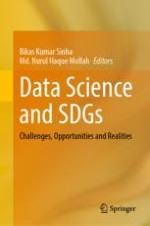2021 | OriginalPaper | Chapter
Machine Learning, Regression and Optimization
Authors : Biswa Nath Datta, Biswajit Sahoo
Published in: Data Science and SDGs
Publisher: Springer Singapore
Activate our intelligent search to find suitable subject content or patents.
Select sections of text to find matching patents with Artificial Intelligence. powered by
Select sections of text to find additional relevant content using AI-assisted search. powered by
